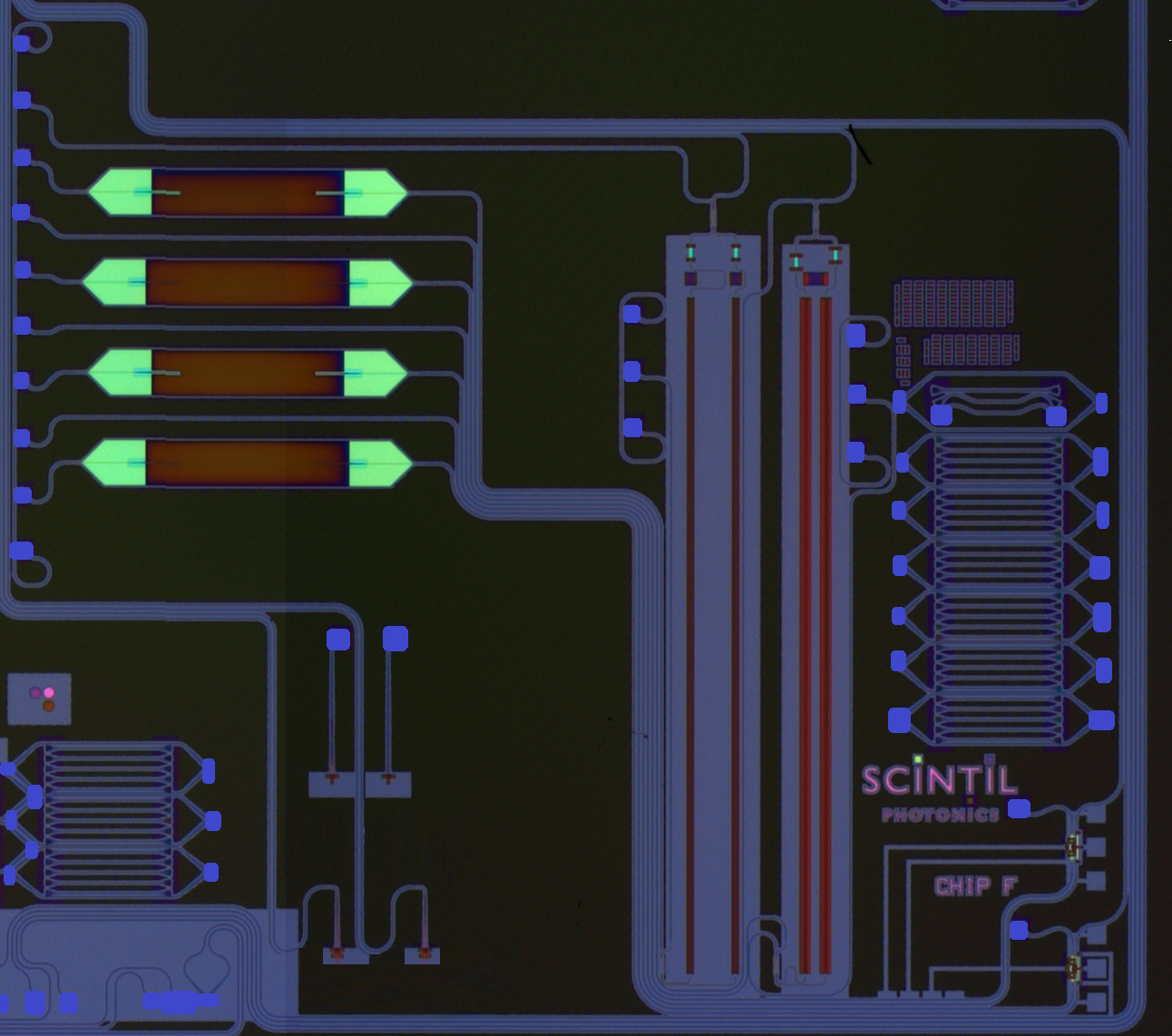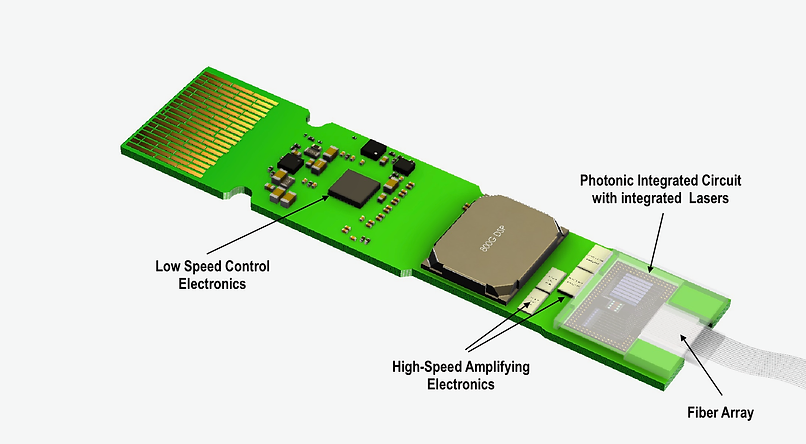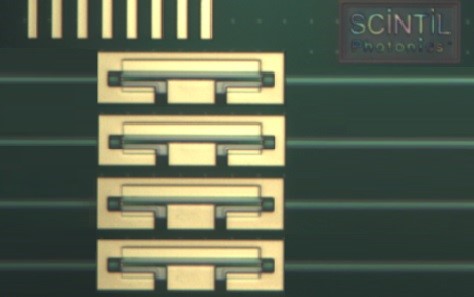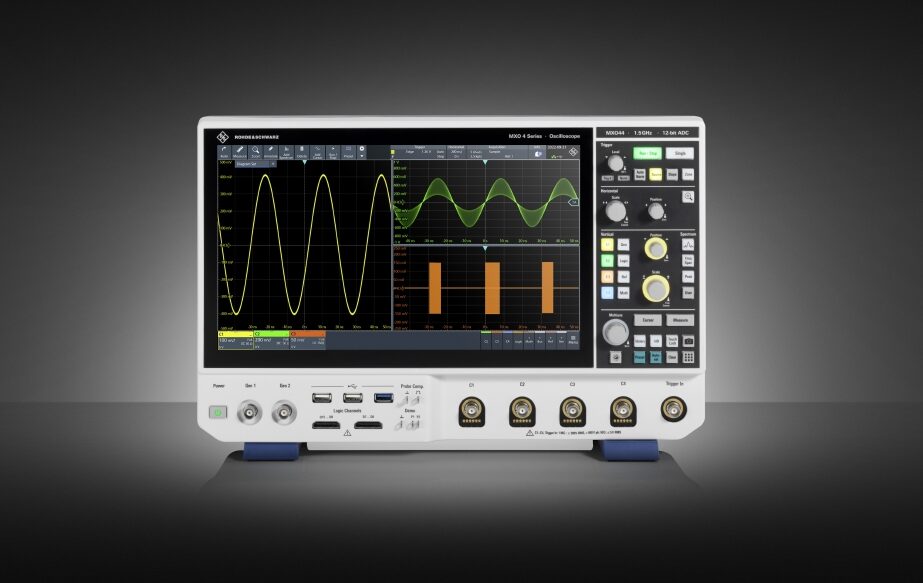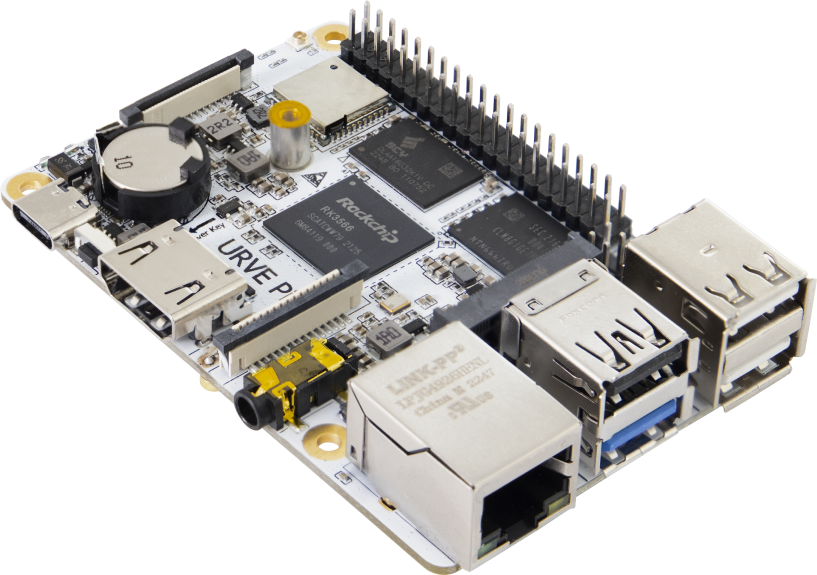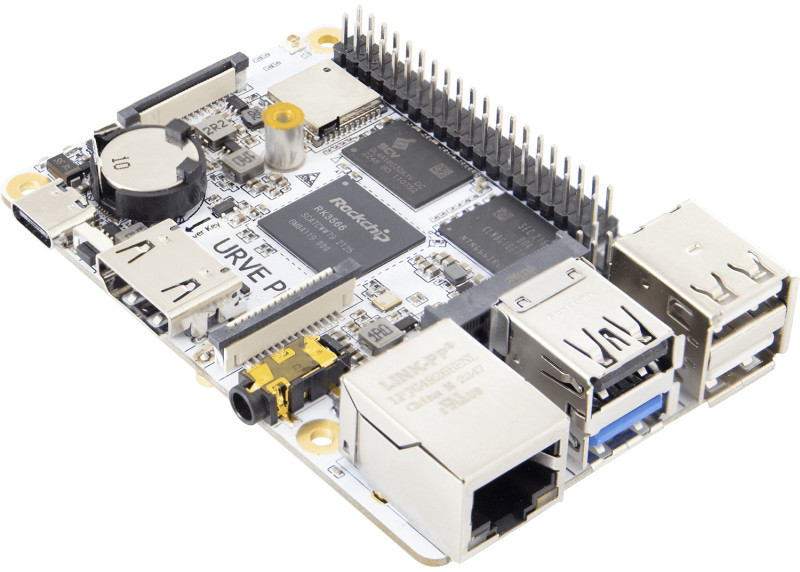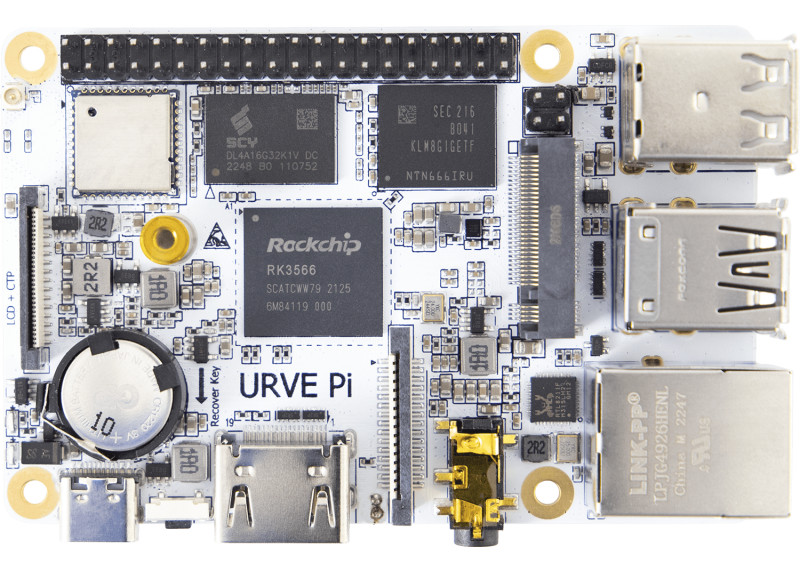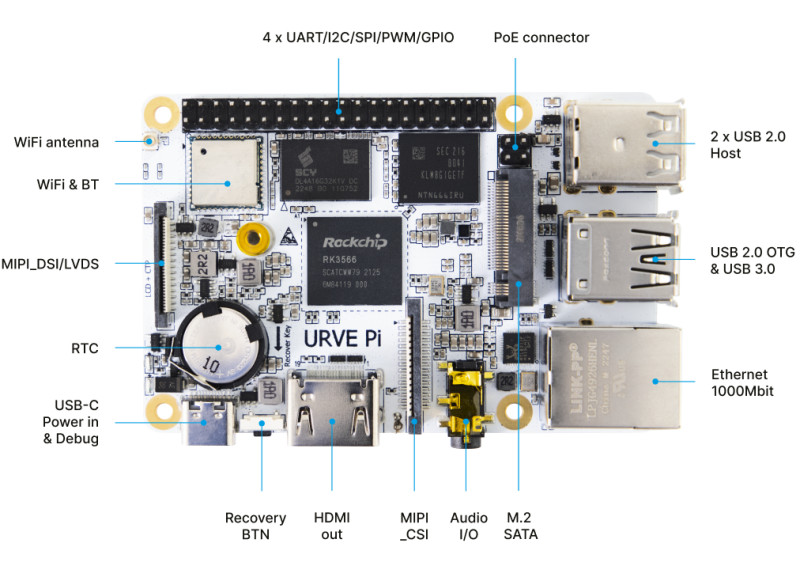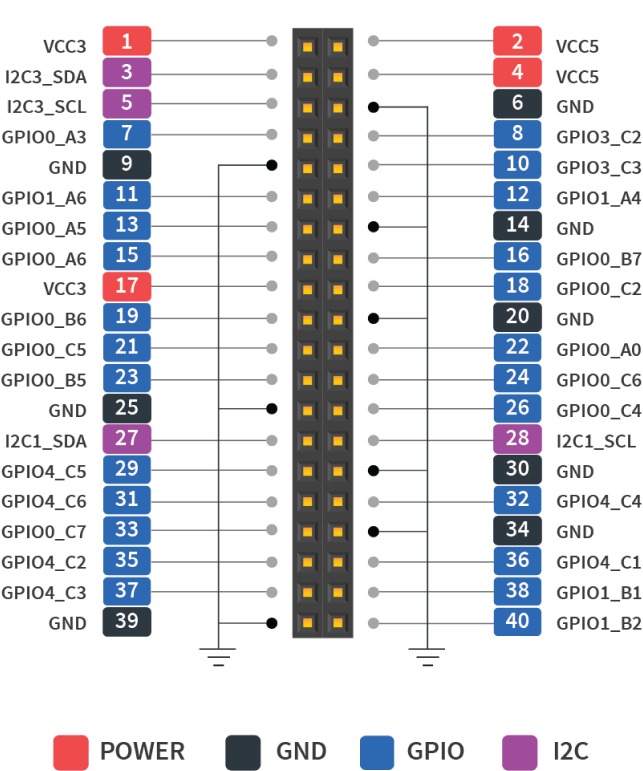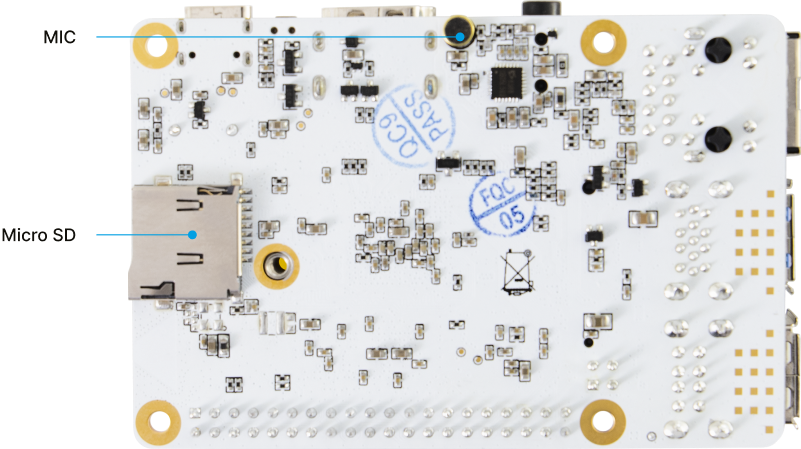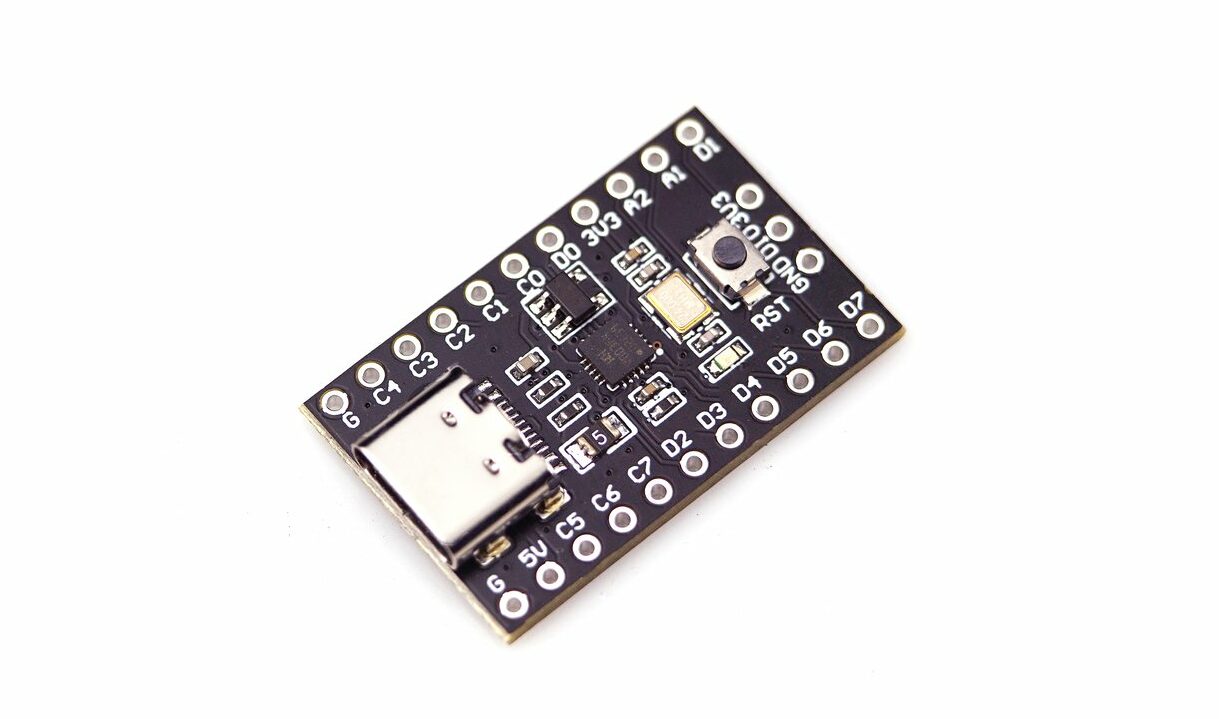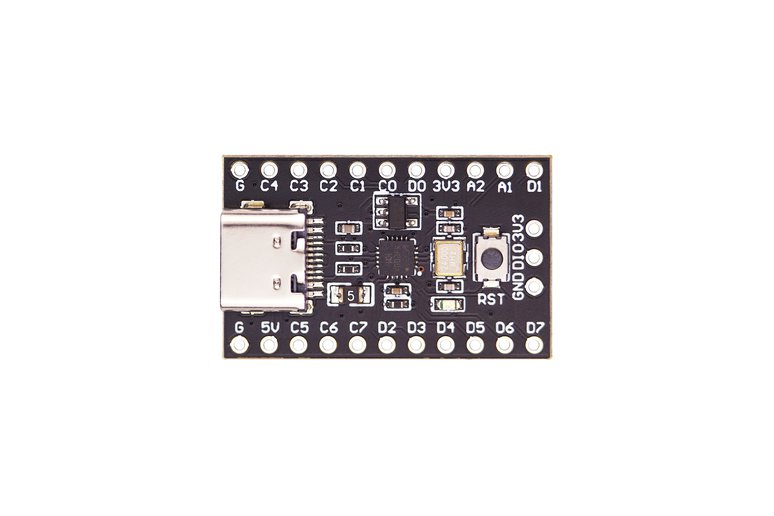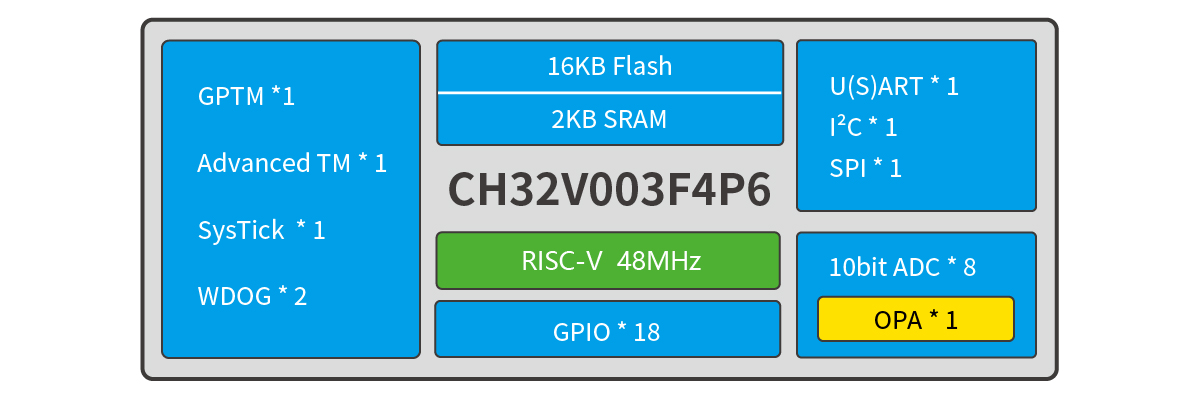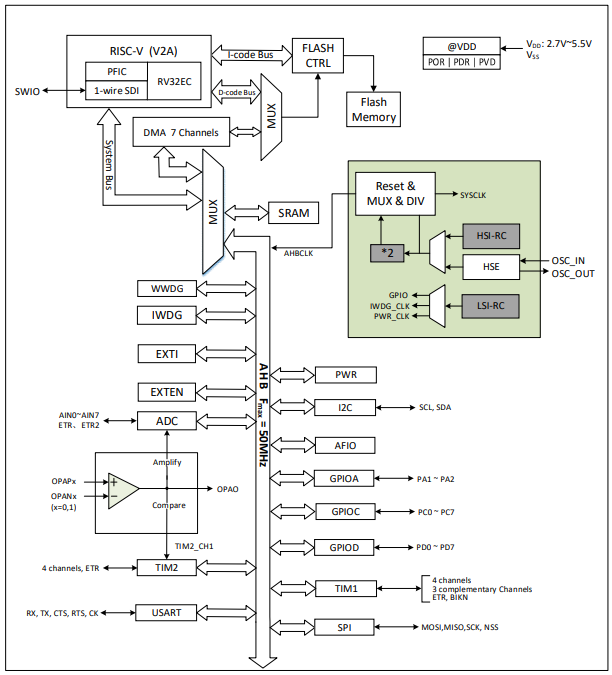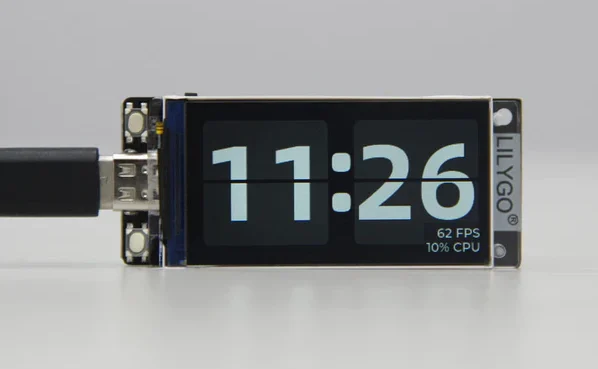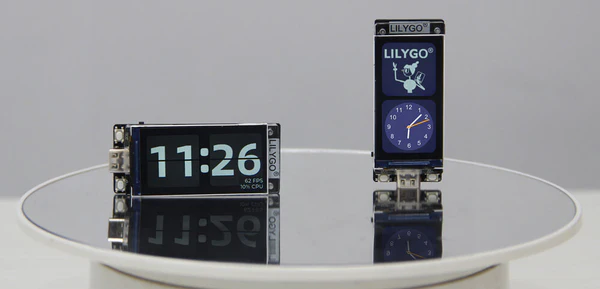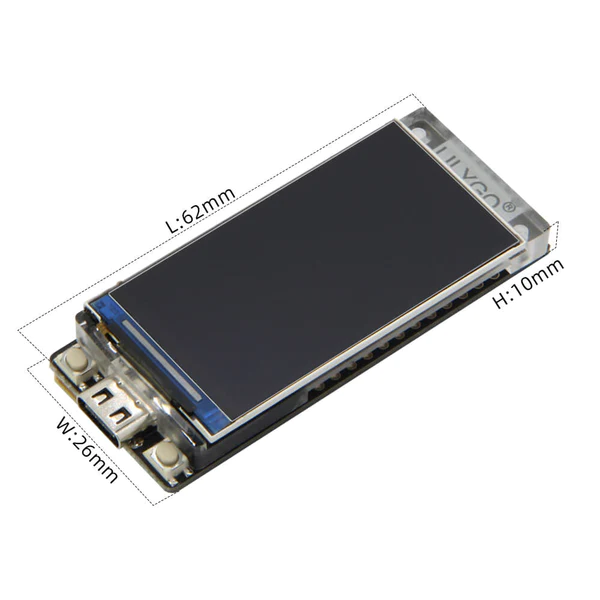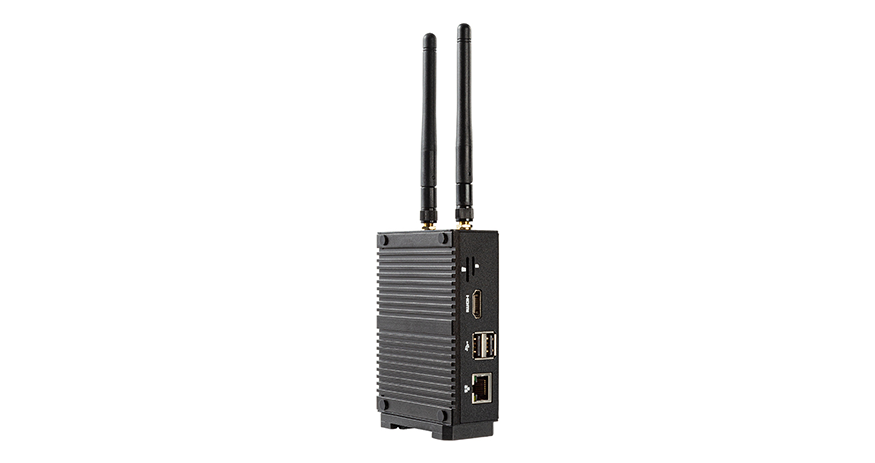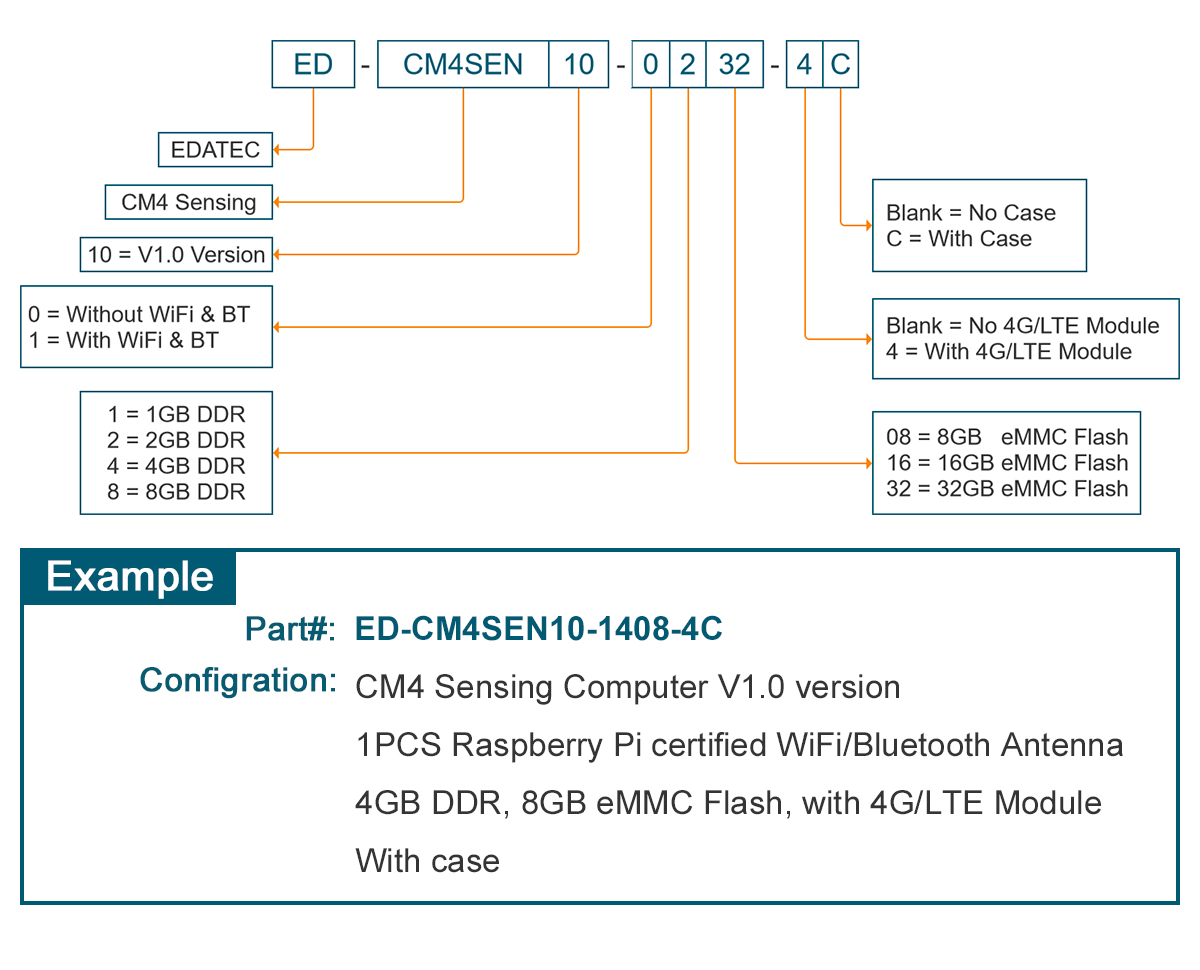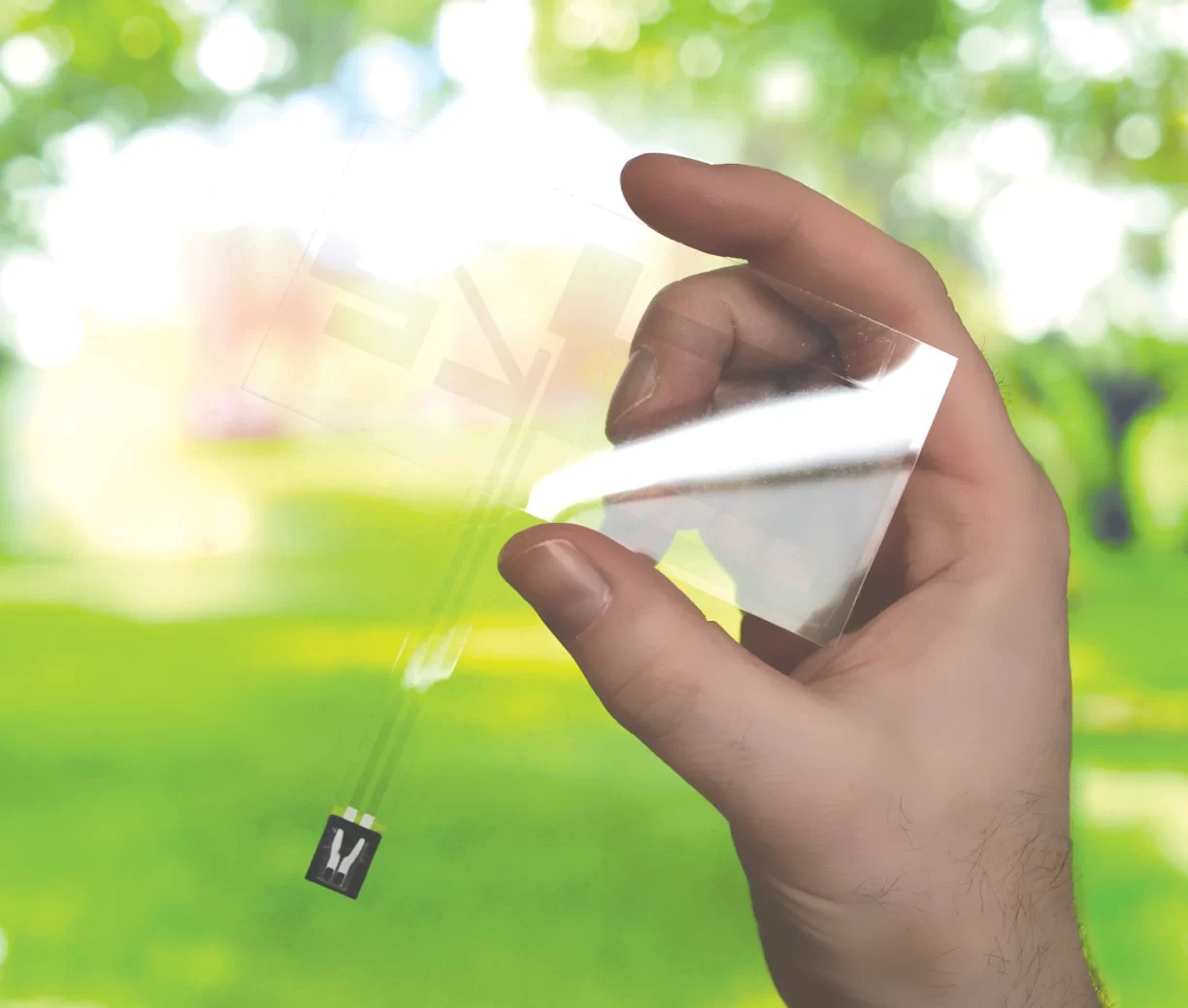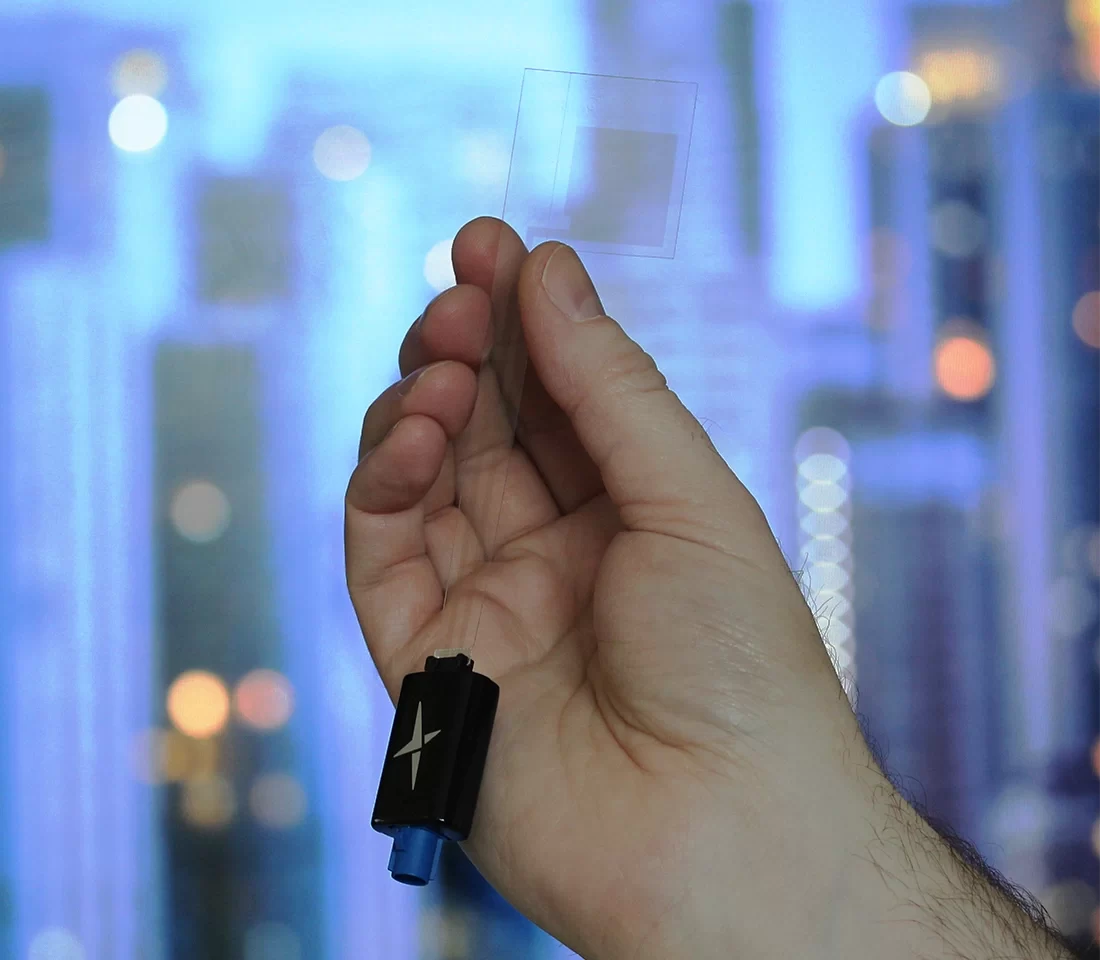High-performance computing and AI applications set to gain improved computing system performance and power efficiency through Scintil’s multi-port comb laser
Scintil will also present: ‘Fully Integrated III-V-on-Silicon Multi-Port DFB Laser Comb Source for 100 GHz DWDM’ during OFC, San Diego (CA), taking place March 5 – 9
Grenoble, France, March 1, 2023 – Scintil Photonics, a leading innovator in silicon Photonic Integrated Circuits (PICs), will demonstrate its latest technology, a single-chip multi-port 100 GHz DFB (Distributed FeedBack) Comb Laser Source for high-performance computing and AI applications, at booth #3351 during OFC 2023.
Named SCINTIL Comb Laser Source, this is the first fully integrated single chip that achieves 100-GHz frequency spacing, which is half to one-quarter of the spacing available today. One of its key advantages is its very narrow controlled channel spacing, an important capability for increasing the number of optical carriers in a single fibre.
“We are thrilled to showcase our latest innovation, a 100 GHz DFB Comb Laser, at OFC 2023,” said Sylvie Menezo, CEO of Scintil Photonics. “Increasing computing capacity requires connecting larger networks of computing units with higher transmission rates. In order to achieve this with sustainable energy efficiency, fiber optic transmission links are used with multiple optical carriers multiplexed on one single fiber. We have succeeded in implementing a comb laser source with only 100 GHz spacing between each optical carrier. This offers at least twice the number of optical carriers compared to what appears to be available today, and therefore enables doubling the transmission speed. Leading customers are currently evaluating our solution.”
The increasing demand for high-performance computing and AI applications has led to the need for faster and more efficient optical interconnects. The SCINTIL 100GHz-Comb Laser Source enables the use of uncooled Dense Wavelength Division Multiplexing (DWDM) links in short reach transmissions, with optical carriers twice as dense (100 GHz versus 200 GHz spacing).
“The Scintil integrated team did an excellent job at every step, from the design of the chip to the packaging and the electronics for a complete solution, with additional locking functions. Thanks to our CMOS commercial foundry, we anticipate ramping up volume by Q4, 2024. We think that our technology will be a game-changer in the field of interconnects for high-performance computing and AI applications,” Menezo added.
Technical features
The DFB comb laser source is designed to fuel optics co-packaged with host ASICs. It features:
- Multiple optical carriers spaced by 100 GHz and all combined and available on either one or multiple output ports
- Configurations that can offer transmissions of 16 optical carriers x 64 Gbps per fiber, which are suitable to support next generation optical compute interconnect links
- Easy locking capabilities, providing system makers with unmatched characteristics for control and performance
Demonstrators are already available and product prototypes will be ready by the end of Q4, 2023.
Scintil will run demonstrations of its DFB Comb Laser Source with 100 GHz spacing at booth #3351, March 7 to 9. Please reserve a meeting slot, here.
The Scintil team will also present a paper entitled: ‘Fully Integrated III-V-on-Silicon Multi-Port DFB Laser Comb Source for 100 GHz DWDM’ on Monday, March 6, 2023, at 17:30 – 17:45 (PT) in M4C.5, room 3.
In other developments, Scintil is expanding its Grenoble office with current openings for a CFO with administrative functions, a senior product development engineer and a semiconductor packaging engineer.
About Scintil Photonics
Scintil Photonics develops and markets silicon Photonic Integrated Circuits (PICs): integrated laser arrays, multiples of 800 Gbit/sec transmitters and receivers, tunable transmitters, and receivers, as well as optical I/O for near chip and chip-chip communication. Its circuits are fabricated on a proprietary III/V-Augmented silicon photonics technology manufactured in a multi-customer silicon foundry. For accelerated adoption, the company also delivers the control electronics and reference package implementations. Based in Grenoble, France, and Toronto, Canada, Scintil is currently taking its innovative product to industrial level as it gears up for mass production.
www.scintil-photonics.com

